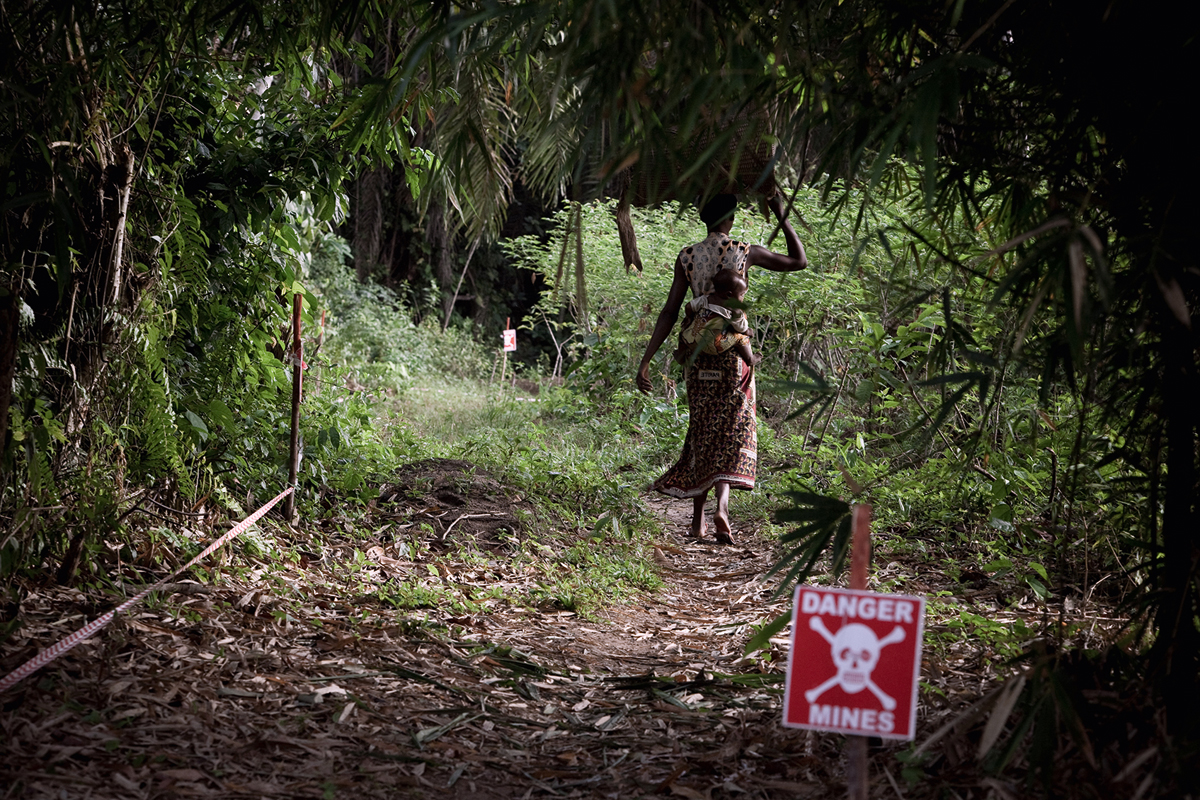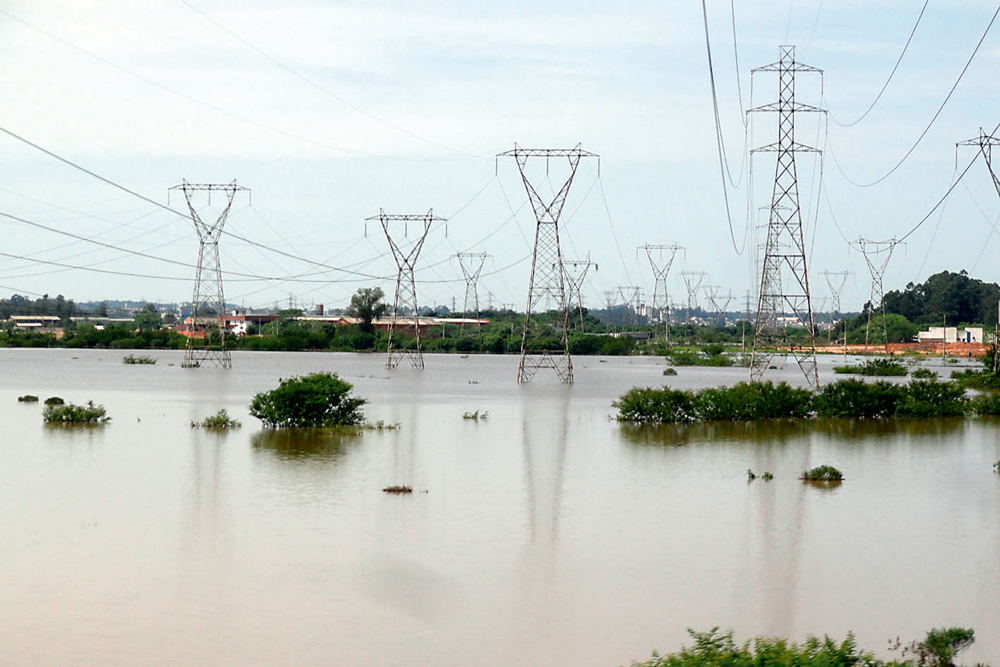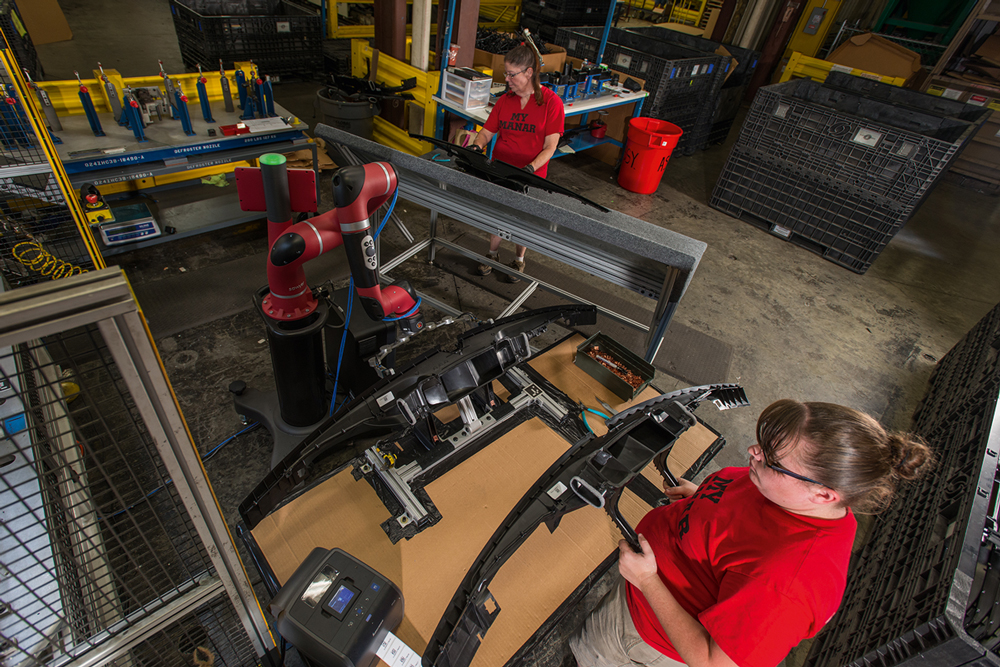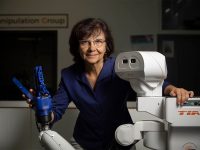Robotics and automation for societal good
Global South challenges and technology-policy considerations
DOI: 10.7203/metode.9.12222

Robotics and automation and artificial intelligence technologies hold immense potential in addressing many of the societal challenges as exemplified in the sustainable development goals of the 2030 agenda of the United Nations. They have the potential not only to increase the standard of living in developed countries, but to improve the quality of life in the so-called «Global South». This article discusses underlying challenges and technology-policy considerations when deploying emerging technologies in developing and developed economies. Various examples and implementations in collaboration with humanitarians, researchers and developers, and professional organizations across the globe are outlined.
Keywords: humanitarian robotics, unmanned aerial vehicles, environmental monitoring, technology policy, ethical, legal, and societal considerations.
Introduction
In its 2030 Agenda for Sustainable Development, the United Nations has identified seventeen sustainable development goals to eradicate poverty and promote peace where emphasis is placed on education, gender equality, and employment. Humanitarian robotics automation and artificial intelligence technologies will play an ever-increasing role in global development, particularly in developing economies, in the coming years sooner than one might think or be willing to admit.
«Humanitarian robotic automation and artificial intelligence technologies will play an ever-increasing role in global development»
Humanitarian robotics and automation and artificial intelligence technologies, in the context of this article, are those that have the potential to transform and positively impact the lives of several people around the globe by addressing some of the most pressing and unsolved needs of humanity thereby elevating the quality of life. In the author’s opinion, most of the past and current research and development efforts in robotics and automation are squarely aimed at increasing the standard of living in developed countries where housing, running water, transportation, schools, or access to healthcare, to name a few, are taken for granted. Humanitarian robotics automation, on the other hand, can make a fundamental difference in people’s lives by alleviating their suffering in times of need such as during natural or man-made disasters or in pockets of the population where the most basic needs of humanity are not met, thus improving their quality of life and not just the standard of living.1
Many of the underlying theoretical frameworks of existing robotics automation technologies are at a sufficient level of maturity and are widely accepted by the academic community after having undergone the scientific rigor and peer reviews that accompany such works. Yet, several of these frameworks, when subjected to the demands of deployment in practical situations, reveal their brittleness and lack of robustness (e.g., the Deepwater Horizon oil spill in the Gulf of Mexico and the Fukushima Daiichi nuclear disaster). The applied use of robotics and automation and artificial intelligence technologies for the benefit of developing and under-developed communities (the so-called «Global South») requires working closely with them to showcase their effectiveness. It is important that the developed solutions strike a chord with the beneficiaries so as to ensure sustainability of such solutions.

The Robotics and Automation Society Special Interest Group on Humanitarian Technology (RAS-SIGHT)
RAS-SIGHT was formed in the fall of 2012 to bring together researchers, developers, interested and like-minded people to contribute to various humanitarian activities where robotics and automation can play a key role towards increasing the quality of life of people around the globe including all regions of the Institute of Electrical and Electronics Engineers (IEEE). This is being accomplished by leveraging existing and emerging technologies for the benefit of humanity by providing a forum for discussions and implementation of projects and ideas in collaboration with global partners and communities.
RAS-SIGHT’s activities broadly fall under challenges and projects. Challenges are intended to advance the state-of-the-art in robotics and automation and provide a platform for researchers and developers to participate in a group setting working towards addressing problems with a humanitarian slant. Projects facilitate communities and associated organizations to work closely with robotics and automation researchers to elevate the quality of life for the residents of communities across the globe. It is worth noting that these projects are not just focused on providing technology-oriented solutions but take into account important factors such as cultural, political, socio-economic and resource constraints to ensure lasting impact.
Two recently completed RAS-SIGHT projects can serve as illustrative examples. The first one is related to the response to infectious disease outbreaks (such as Ebola), one of the important aspects is to guarantee the safety of the personnel from coming into contact with the virus in treatment clinics. Researchers from the Northeastern University in the United States have developed a system for transferring epidemiological data from remote point-of-care sample collection facilities to testing facilities. To overcome the difficulties associated with the process of tracking blood samples, they created a low-cost system in which epidemiological data is coded directly to sample vials. Since the vials are machine readable, data entry step is automated. Additionally, they prototyped a device that uses GPS and cellular technology to facilitate remote tracking of the samples while they are in transit from the point–of–care facility to the testing facility (Wonsick, Mehegan, & Padir, 2016).
«Drones can acquire high-resolution multispectral images, which in turn can produce 3D models of hazard zones without putting human lives at risk»
The second project aimed at help motor-impaired people in Bolivia. According to the World Health Organization, motor-impaired people represent 10 % of this country’s population. The limited health care system in Bolivia does not allow for accommodating the needs of this specific group. Researchers from the Bolivian Private University have developed a variable stiffness prosthesis device that can give back some of the lost functions to the user. They developed a mechanism that allows the user to regulate the stiffness mechanically with one hand while a movement of the wrist can activate the grasper. The prototype has three fingers that are passive. They have designed a variable stiffness grasper that uses only 3D printing methods for it to be manufactured thus keeping the production costs low. Two different myoelectric controllers have been developed as well that allow the use of standard servomotors to emulate variable stiffness actuation (Tapia, Urquidi, & Pakleppa, 2018).
Robotics for demining
One of the signature activities of RAS-SIGHT has been the establishment of the Humanitarian Robotics and Technology Challenge (HRATC) focusing on the detection of landmines in war-ravaged parts of the world. According to the United Nations Mine Action Service2, land mines kill 15,000–20,000 people every year (mostly children) and maim countless more across 78 countries. Demining efforts cost 300–1,000 US dollars per mine, and, for every 5,000 mines cleared, one person is killed and two are injured. Thus, clearing post-combat regions of land mines has proven to be a difficult, risky, dangerous, and expensive task with enormous social implications for civilians.
The main goal of the HRATC has been to develop reliable robotic solutions for detecting landmines and unexploded ordnance, especially for communities where, due to these explosives, people live in fear of losing limbs or even their lives. Consequently, these communities have reduced access to agricultural lands for growing crops, which severely restricts their sustenance and livelihood. While other solutions exist, they are prohibitively expensive and are not practical for the developing world, where the bulk of these mines are buried. The emphasis of the HRATC from the beginning has been the development of cost-effective and sustainable solutions for such communities (Madhavan et al., 2014; Madhavan et al., 2015; Prestes et al., 2016).

The primary goals of the challenge are to: 1) develop an open source and free software for reliable and robust detection and classification of landmines and subsequent clearance; 2) inspire, encourage, and educate researchers and students on the benefits of deploying robotics and automation technologies for the benefit of humanity, and 3) provide a platform for exchanging ideas on addressing pressing needs across the globe via robotics and automation technologies.
The first HRATC edition kicked off in 2014 with a challenge that focused on promoting the development of new strategies for autonomous landmine detection using a mobile (ground) robot. The strategies developed by the participating teams were objectively and quantitatively evaluated according to the following criteria: exploration time and environmental coverage; detection and classification quality (i.e., when a metallic object is detected, it should be classified correctly as a landmine or non-landmine); and landmine avoidance (i.e., while navigating, the robot should not go over landmines).
The challenge takes place in three phases: 1) simulation phase, 2) testing phase, and 3) challenge phase. Teams are progressively eliminated after each phase and the remaining teams move on to the next one culminating in the challenge (finals) phase. It should be noted that the teams do not need to purchase or build a robot instrumented with sensors or develop any of the accompanying software. Every team can participate remotely in each phase. HRATC is the only mine detection event in the world that provides free access to a state-of-the-art robot platform and sensors to participants from all over the globe, thereby promoting the education of roboticists from developing countries with advanced tools. This has resulted in significantly lowering the entry barrier for students and researchers who otherwise do not have a practicable way to participate in an international robotics challenge geared towards the benefit of humanity.
«The enormous potential of dual-use technologies for war and peace is irrefutable»
One of the most challenging aspects for the competing teams has proven to be the reliable detection of the buried mines. During different iterations of the challenge, it was observed that the teams are not fully utilizing the robot’s capabilities; for instance, they were not integrating the robots vision capabilities or properly controlling the arms height so they can maximize the probability of detecting landmines. Since most teams were comprised entirely by students that do not have a strong background in robotics, it is directly reflected on the teams’ performance during all phases of the challenge. This is not entirely surprising since it is necessary that the participants have a good grasp of robot navigation aspects such as motion planning, localization, nonlinear signal processing, and ROS (robot operating systems).
One possible problem with the HRATC format could be the steep learning curve that the participating teams need to undergo especially if they are competing for the first time given the relatively short time span of the challenge. Perhaps a longer period of involvement would provide the time necessary for tangible advances to occur. Starting with the 2017 challenge, a standard documentation practice has been devised that would be adopted to make the teams code reusable for other teams. Though the progress has been incremental and slower than anticipated, the organizers remain optimistic about the potential of such challenges to solve the humanitarian problem of detecting and extricating landmines.
Drones for disaster response and environmental monitoring
Unmanned aircraft systems (UAS) or unmanned aerial vehicles (UAVs), colloquially referred to as drones, though first developed by the military, are now being increasingly used in civilian applications. Whether they are remotely piloted by ground operators or flown autonomously, they are an invaluable tool and an «eye-in-the-sky» asset. In GPS-denied environments and areas where immediate access to satellite imagery and communication networks is not available, such as disaster response and recovery operations in developing countries, UAVs can provide the much-needed high-resolution and on-demand images for situational assessment and awareness that literally could mean the difference between life and death.

The Rio Grande do Sul region in Southern Brazil (see Figure 1) consists of several high-risk areas. According to the Brazilian Civil Defense, almost 600 extreme events led municipalities to declare a state of emergency in Rio Grande do Sul between 2003 and 2010. Almost a million people were affected, either by becoming homeless or missing, getting injured, sick, dying, or having to relocate or in extreme cases, resulting in fatalities.
In order to assist the disaster response and recovery effort, it would be highly desirable to identify and map areas of interest where the critical efforts should be focused. Traditionally, this information is gathered by remote sensing and/or cameras carried by manned aircraft. While the later involves high costs and complicated logistics, the former cannot be used to support an emergency plan when a hydrological disaster occurs since its use imposes constrains like fixed revisit frequency, large elapsed time between an observation and the image supplied, and problems associated to the presence of clouds. An interesting and efficient solution is to use UAVs for obtaining a bird’s-eye view of the landscape and also for capturing detailed and high-resolution images of the ground. UAVs can acquire high-resolution multispectral images, which in turn can produce 3D models of hazard zones without putting human lives at risk. Meteorologists, hydrologists, and spatial modelers can use such data to provide better detail and reliable results at a local scale.
Joint work with colleagues from the Federal University of Rio Grande do Sul (Silva et al., 2016) has been centered on enhancing the regional models using precision and super high-resolution images taken by UAVs especially for those areas already identified as high-risk. Meteorological sensors carried by UAVs can be employed to collect atmospheric information, providing better precision for the meteorological models at a local level. When these data are integrated in hydraulic/hydrological models, scene-generation becomes possible, thus allowing to predict which regions are vulnerable to floods or landslides depending on different levels of rainfall. This information can then aid rescue teams in addressing associated concerns. These efforts represent the first instance of the merging of multi-resolution aerial data, web geographic information system, policy, and disaster management practices to arrive at an analytically rich, practical, and effective national disaster response structure for Brazil and possibly extendible to other developing economies.
Technology-policy considerations
The development and deployment of humanitarian robotics and automation technologies can be thought of as a bottom-up approach that is cost-effective and geared towards improving the quality of lives as discussed earlier in this article. It is equally important that a top-down approach is also undertaken to account for the associated regulation and governance issues to inform the shaping of technology-policy considerations that would positively impact the masses. As such, fostering the development of technology for societal good and understanding the ethical, legal, and societal implications of emerging technologies for the benefit of humanity should go hand-in-hand.
«Robotics has transformed traditional norms of work and employment in developed economies»
Typically, regulations struggle to keep up with technology growth and lag behind, which in turn tends to slow down innovation and preclude the societal acceptance. Agile and nimble regulation and governance are of paramount importance if technologies were to become pervasive and benefit humankind to its fullest potential. A case in point is the regulation issues associated with autonomous vehicles and UAVs. While guides and best practices have been proposed, they are still not enforceable from a legal standpoint. Other areas that require attention include the discussion surrounding robots and jobs. The next sections delve into the workforce development in the automation age in developing economies and issues related to unmanned aircraft systems.
Training and workforce development for developing economies
Robotics, automation, and artificial intelligence have transformed traditional norms of work and employment in developed economies, where there are increasing concerns on future implications of automation and how they impact society at large. How some of these issues translate to the Global South has not been widely understood in the development community since their societal acceptance and assimilation differ significantly between developed and developing economies (the so-called «North-South divide»).
The discussion on automation and employment is erroneously centered on only the number of jobs lost. Instead it should be focused on the changing nature of work because of the automatability and functional description of tasks. In the fourth industrial revolution, the emphasis is on how machines and humans work together where repetitive and dangerous tasks can be relegated to machines and automated systems whereas humans can focus on aspects that require creativity, social skills, and emotional intelligence. This augmented collaborative workforce is the wave of the future and has enormous implications for employment in the automation age.
In labor-intensive economies (e.g., BRICS3 countries), the effects of automation would be felt much more steeply in the coming decade. While labor may be cheap in developing economies, automation in developed economies will offset this advantage thereby resulting in significant decline of the workforce in underdeveloped and developing nations. Socio-economic, political, and resource constraints should be carefully considered when emerging technologies are deployed since there is potential for unintended consequences such as tilting economic and power structures to unduly benefit certain segments of the society resulting in new gaps and/or exacerbating existing inequities. There are time-sensitive challenges on how developing nations, with their outdated classroom-centric curricula and limited budgets, can be imparted with technical expertise that would allow for introduction and absorption of these cutting-edge technologies.
«Socio-economic, political, and resource constraints should be carefully considered when emerging technologies are deployed»
Training programs with reskilling development of requisite skillsets available across the spectrum of the workforce, not just for low-skilled workers, should be mandated. Education of developing countries on the potential of emerging technologies by development of new curriculum, research, technology transfer, dissemination of best practices and successful use-cases should be undertaken. A robust data-driven evidence-based implementation of these efforts would lead to sustainable job creation and better quality of life. Capacity building, empowering local governments and communities, and nurturing practical legal and policy frameworks and guidelines would usher in an era of equitable growth and upward mobility leading to eradication of poverty.
Ethical, legal, and societal issues in deploying unmanned aerial systems
Though UAS have been mired in controversy over military strikes by personnel situated thousands of miles away and yet acknowledged as an asset in humanitarian missions, the enormous potential of these dual-use technologies for war and peace is irrefutable. The use of drones for precision strikes against terrorist targets is well-documented. Amidst concerns and controversies over loss of civilian lives, the number of strikes has steadily increased over the last decade. Data limitations hamper accurate analysis of efficacy of drone operations towards addressing transparency issues (especially in counterterrorism efforts).

On the other end of the spectrum, as it is common with dual-use technologies, UAS also have their use in peacekeeping. UAVs deployed for surveillance can prevent atrocities and provide data for human rights violations. Agencies like the UN lack the necessary technological capacity and infrastructure for remote monitoring and data analysis. The International Civil Aviation Organization, the regulating body responsible for international aviation, does not yet stipulate regulations for autonomous operations, which has led to member states formulating their own regulations resulting in ad hoc policies across countries.
One of the hotly debated issues is that of autonomy of UAS, among other related issues of privacy, security, safety, and liability. Advances in machine learning and robotics raise complex legal, ethical, societal, and technological issues with respect to autonomy, which is becoming pervasive in UAS transport and navigation leading to the remote use of force by advanced nations.
The absence of enforceable legal standards and a credible arrangement of governing the use of armed drones are compounding the perceived lack of transparency and accountability of current policies, which could potentially polarize the international community. Given that regulations do not exist in many countries and where they do exist, they typically do not conform to International Humanitarian Law, such unchecked proliferation of UAS would have dire international implications. Without adequate legislation and drone-specific non-proliferation objectives, it is not hard to imagine development by non-state actors. Concerted efforts to contain proliferation through the development of sophisticated export control strategies should be undertaken. An international code of conduct in consultation with experts to regulate global UAV markets should be developed. These efforts would serve to quell concerns stemming from issues such as liability for damages, data privacy, safety, and security and pave the way to establish ethical norms, standards, and consistent practices for UAS with increased autonomy.
«Without adequate legislation, it is not hard to imagine malevolent UAS development by non-state actors»
Concluding thoughts
Adoption of emerging technologies tends to be slow in developing countries due to reasons that are usually beyond gross domestic products rates and standard of living indices. Whilst the potential of these technologies is for the most part undeniable, the challenge lies in making them reliable, cost-effective and easily accessible for the masses by taking into account socio-economic, cultural, environmental, and sustainability factors. Additionally, ethical, legal, and societal considerations of emerging technologies are of paramount importance as the demarcation lines between individual privacy, safety, and security and those of the collective society get blurred without timely governance and regulation.
It is the author’s firm belief that developing sustainable tools, identifying gaps, and initiating dialogs between various stakeholders including academia, industry, and government will lead towards alleviation of suffering for mankind by increasing the effectiveness and/or efficiency of emerging technologies. As a welcome byproduct, it also will educate the public on the good and benevolent aspects, which in turn will facilitate societal acceptance of robotics and automation and artificial intelligence technologies while maximizing their impact.
1The author’s thoughts on standards of living are influenced by the seminal work of Schumacher (1973) particularly by his exposition of «Buddhist economics». (Go back)
2http://www.mineaction.org/unmas (Go back)
3Acronym for the emergent markets of Brazil, Russia, India, China, and South Africa. (Go back)
REFERENCES
Madhavan, R., Marques, L., Prestes, E., Dasgupta, P., Cabrita, G., Portugal, D., … Garcia, J. (2014). 2014 Humanitarian Robotics and Automation Technology Challenge. IEEE Robotics and Automation Magazine, 21(3), 10–16. doi: 10.1109/MRA.2014.2334953
Madhavan, R., Marques, L., Prestes, E., Maffei, R., Jorge, V., Gil, B., … Dasgupta, P. (2015). 2015 Humanitarian Robotics and Automation Technology Challenge. IEEE Robotics and Automation Magazine, 22(3), 182–184. doi: 10.1109/MRA.2015.2452199
Prestes, E., Marques, L., Neuland, R., Mantelli, M., Maffei, R, Dogru, S., … Madhavan, R. (2016). The 2016 Humanitarian Robotics and Automation Technology Challenge. IEEE Robotics and Automation Magazine, 23(3), 23–24. doi: 10.1109/MRA.2016.2587921
Schumacher, E. F. (1973). Small is beautiful: Economics as if people mattered. London: Blond & Briggs.
Silva, T., Madhavan, R., Prestes, E., Farina, F., Gandra, T., Wiebbelling, R., & Almeida, D. (2016). Unmanned aerial vehicles for environmental monitoring and disaster management. In Proceedings of the 2016 International Tech4Dev Conference, Lausana, Suïssa. Retrieved from https://cooperation.epfl.ch/files/content/sites/cooperation/files/Tech4Dev%202016/1229-Silva-SE02-HUM_Full%20Paper.pdf
Tapia, C., Urquidi, O., & Pakleppa, M. (2018). Variable stiffness prosthetic grasper with myolelectric control, IEEE RAS-SIGHT Project. Retrieved from
http://www.ieee-ras.org/images/Variable_stiffness_prosthetic_grasper_with_myolelectric_control.pdf
Wonsick, M., Mehegan, C., & Padir, T. (2016). Enhancing the outcomes of epidemiological surveillance in Liberia through automated tracking of blood samples. Retrieved from http://www.ieee-ras.org/images/TaskinPadir_ras-sight-finalReport-padir.pdf





